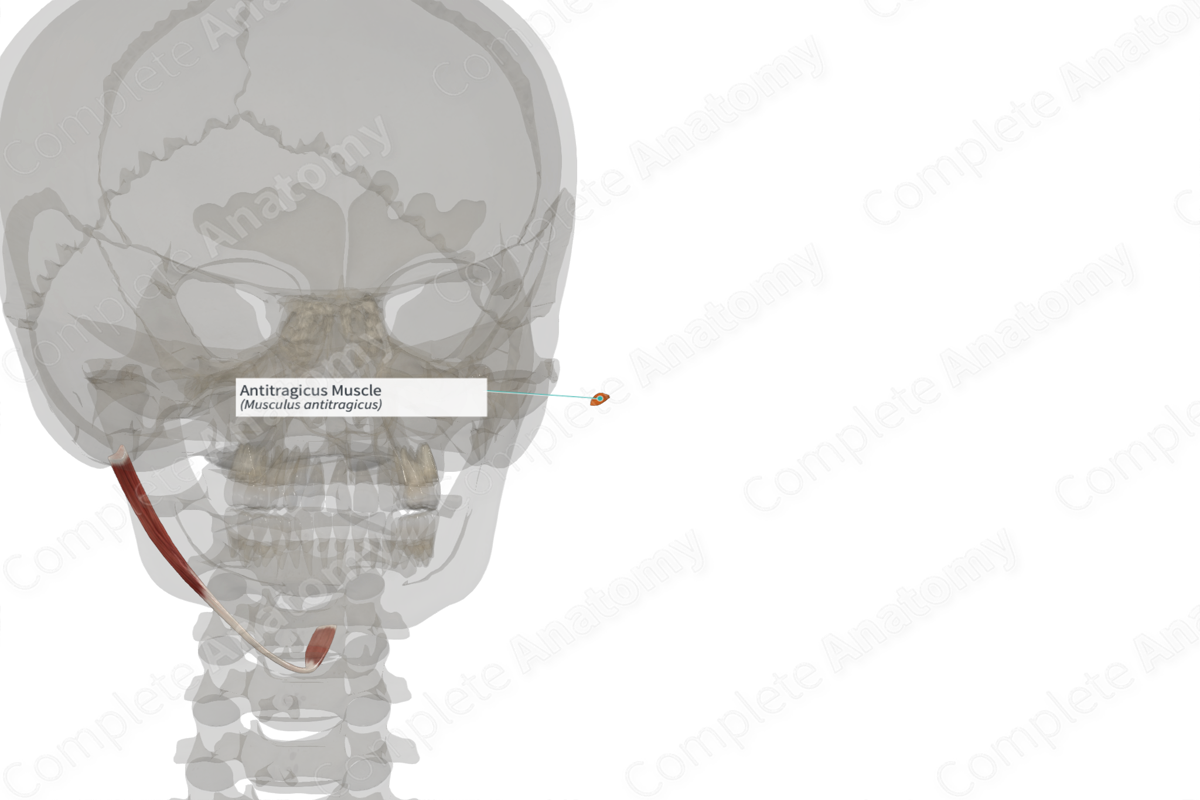
Quick Facts
Origin: Antitragus.
Insertion: Antihelix.
Action: Typically, no movement in humans.
Innervation: Temporal branches of facial nerve (CN VII).
Arterial Supply: Posterior auricular and superficial temporal arteries.
Origin
The antitragicus muscle originates from the external margin of the antitragus on the lateral surface of the auricle.
Insertion
The antitragicus muscle inserts into to the helical tail and antihelix on the lateral surface of the auricle.
Actions
It is believed that the antitragicus muscle contributes to the shape of the auricle, where the presence of a well-defined muscle leads to a poor developed antihelix (Bennett, Dagash and McArthur, 2005).
References
Bennett, S. P., Dagash, H. & McArthur, P. A. (2005) The role of the antitragicus muscle in plical folding of the pinna. Plast Reconstr Surg, 115(5), 1266-8.




